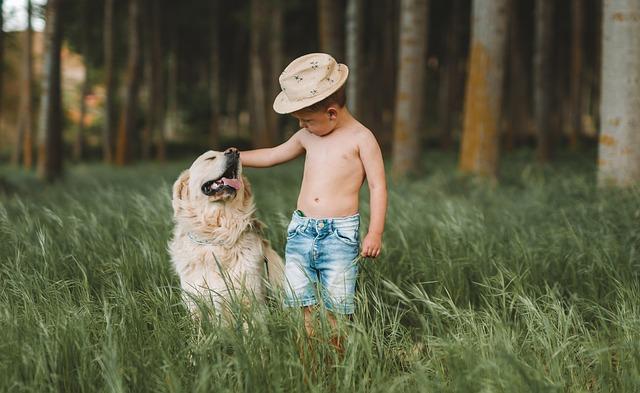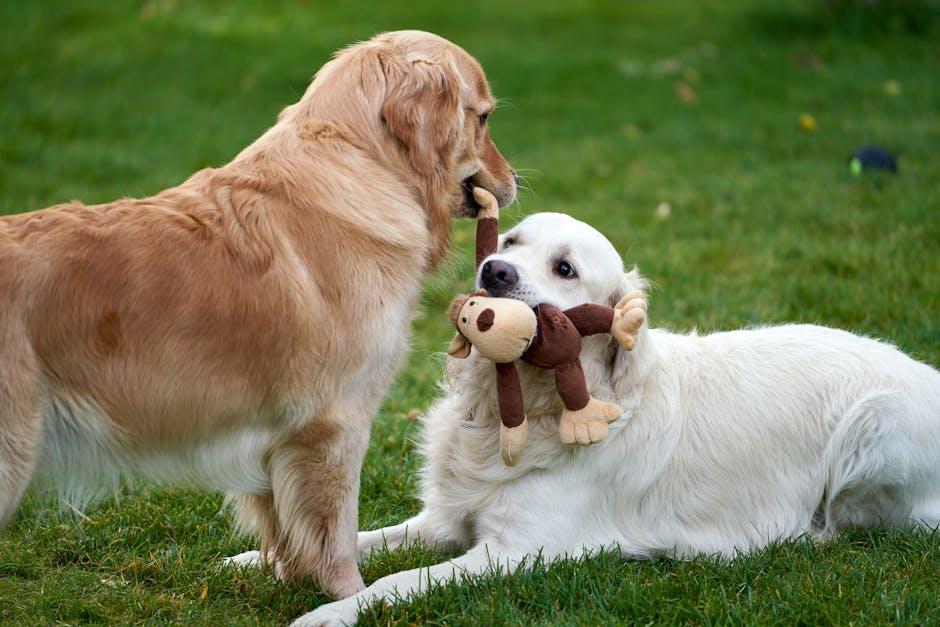Should Dogs With Behavioral Issues Be Socialized With Children

In the realm of wagging tails and playful barks, dogs have long held the title of “man’s best friend.” Yet, within this bond of loyalty and companionship lies a complex question that many pet owners and parents grapple with: should dogs with behavioral issues be socialized with children? This question treads a delicate line, where the safety of children intersects with the potential for rehabilitation and integration of dogs exhibiting challenging behaviors. As we embark on this exploration, we delve into the heart of canine psychology, child safety, and the intricate dance of trust and understanding. Join us as we navigate this multifaceted issue, unraveling expert opinions, real-life experiences, and the profound connection between humans and their four-legged friends.
Understanding Canine Behavior Challenges in Family Settings
Integrating dogs with behavioral challenges into a family setting, particularly around children, requires careful consideration and strategic planning. Understanding the nuances of canine behavior is essential in determining the appropriate socialization methods. Dogs may exhibit a range of behaviors such as anxiety, aggression, or excessive fear, each demanding a tailored approach. It’s important to first assess the severity of these issues with the help of a professional trainer or behaviorist. By identifying triggers and patterns, families can develop a customized plan that ensures the safety and well-being of both the dog and the children involved.
- Supervised interactions: Always monitor initial interactions between the dog and children to prevent misunderstandings and accidents.
- Gradual exposure: Introduce the dog to the family environment slowly, allowing it to acclimate at its own pace.
- Positive reinforcement: Encourage desirable behavior with treats and praise, reinforcing the dog’s confidence and trust.
- Educational involvement: Educate children about respecting the dog’s space and recognizing its body language to foster a harmonious relationship.
By implementing these strategies, families can create a nurturing environment that addresses the dog’s behavioral challenges while promoting a positive dynamic with children. Patience and understanding are key components in this delicate process, paving the way for a more balanced and enriched family life.

Exploring the Risks and Benefits of Dog-Child Interactions
When considering the interaction between dogs with behavioral issues and children, it’s crucial to weigh both the potential risks and benefits. Dogs, much like humans, have their own personalities and quirks, which can sometimes manifest as behavioral challenges. These issues may include aggression, anxiety, or fearfulness. On the one hand, socializing such dogs with children can be risky. Children might inadvertently provoke a dog by engaging in rough play or sudden movements, potentially leading to defensive reactions. Additionally, the unpredictability of a dog with behavioral issues could pose a safety concern in certain situations.
On the flip side, there are potential benefits to carefully managed interactions. For instance, children can develop a sense of empathy and responsibility when they learn to understand and accommodate a dog’s needs. Moreover, with proper guidance and supervision, these interactions can aid in the dog’s socialization process, gradually helping to reduce anxiety or fear-based behaviors. Consider the following strategies for safer interactions:
- Supervision: Always supervise interactions to ensure the safety of both the child and the dog.
- Education: Teach children about dog body language and how to approach dogs respectfully.
- Professional Guidance: Consult with a professional dog trainer or behaviorist for personalized advice.
- Gradual Exposure: Introduce the dog to children in a controlled and gradual manner, starting with short, positive interactions.
Ultimately, while the potential benefits can be rewarding, the decision should be made with careful consideration and a focus on the well-being of both the child and the dog.

Effective Strategies for Safe Socialization Practices
When considering socializing dogs with behavioral issues around children, implementing effective strategies is crucial to ensure the safety and well-being of both parties. Here are some recommended practices:
- Gradual Introduction: Start with short, supervised interactions in a controlled environment. Allow the dog to become accustomed to the presence of children without overwhelming them.
- Positive Reinforcement: Reward calm and appropriate behavior with treats or praise. This encourages the dog to associate children with positive experiences.
- Professional Guidance: Engage a certified dog trainer or animal behaviorist to assess the dog’s behavior and provide tailored strategies for socialization.
- Child Education: Teach children how to interact with dogs safely. Emphasize the importance of respecting the dog’s space and recognizing signs of discomfort.
By employing these strategies, you create a structured environment that fosters trust and understanding, paving the way for harmonious interactions between dogs and children.

Expert Recommendations for Families with Dogs Facing Behavioral Issues
When it comes to integrating dogs with behavioral challenges into a family environment, particularly one with children, expert guidance is crucial. Behavioral specialists often emphasize the importance of understanding the root causes of a dog’s issues before proceeding with any socialization efforts. Dogs that exhibit fear-based aggression or anxiety might require a different approach compared to those with dominant tendencies. Consulting a professional can help tailor a plan that ensures the safety and well-being of both the dog and the children involved.
Experts also suggest a few practical steps that families can take to facilitate a harmonious relationship between children and dogs with behavioral issues. Consider these recommendations:
- Gradual Introduction: Start with controlled and brief interactions, gradually increasing the time as the dog becomes more comfortable.
- Safe Spaces: Ensure that the dog has a designated area where it can retreat if it feels overwhelmed.
- Consistent Training: Employ positive reinforcement techniques to encourage desirable behaviors in various settings.
- Supervised Play: Always monitor interactions between children and dogs to intervene if necessary and to reinforce positive behavior.
Through patience and expert advice, families can create a safe environment where both children and dogs can thrive together.



